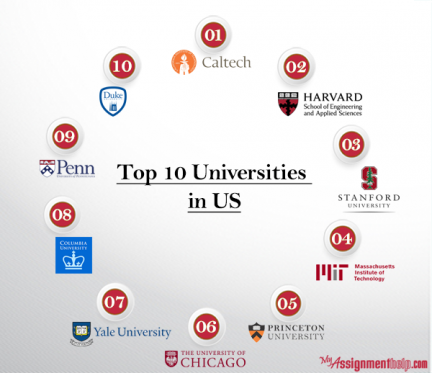![Blogging Guidepost]() Author and marketer Lynn Serafinn shares her 12-step template for turning info articles into rich content for your readers and effective marketing tools for you.
Author and marketer Lynn Serafinn shares her 12-step template for turning info articles into rich content for your readers and effective marketing tools for you.
As a marketing consultant, I work with non-fiction authors and social entrepreneurs . Almost without exception, my clients come to me with the same desire—they want to build their online marketing platform so they can ‘get the word out’ to the world about their ethical enterprise or book. For this to happen, it’s vital that we create, define or refine their ‘brand’.
Your brand is not just about your book or what your business has to offer; nor is defining your brand just about getting the right name, logo and colours. Your brand is a profile of who you are. It’s about your values and your mission. It answers questions like:
- What is the change you want bring to the world?
- What value does your book or company bring to humanity and planet?
Armed with this level of self-awareness, an author can then begin the greater work of communicating their brand to the public. In a nutshell, that’s what marketing is.
One of the key methods I encourage my clients to use to communicate with their audience is blogging.
Blogging, whether in writing or video blogging (or ‘vlogging’ as it is often called) is one of the most expressive, creative and effective ways to reach your intended audience and allow them to get to know your brand intimately. Unfortunately, most independent business owners I meet have no idea how to write an effective blog that a) reinforces their brand and b) ‘sells’ their enterprise without turning into a schmoozy sales letter.
In this article, I’m gong to give you a 12-step template for writing an effective blog that cangive genuine value to your readers, build greater connection between you and your audience, and serve as a marketing piece for your ethical business without diminishing the integrity of your mission and your message.
STEP 1: Choose Your Topics Strategically
To make blogging work as a marketing strategy, you need to put yourself in your audience’s shoes. What are they looking for? What problems are they trying to solve? What do they love, hate, fear, desire? See the world through their eyes.
Then, ask yourself this: How does your business address their problems? What expertise do you have that can meet their needs? Make a list of topics and break them into sub-topics. Try to come up with at least 20 ideas. If you blog only once a week, that’s nearly 6 months’ worth of value-driven content ideas. When I do this exercise with clients, they are often surprised to see how EASY it is to come up with rich, relevant ideas. They get excited because it opens up a whole new world of communication possibilities.
What if you aren’t a naturally gifted writer?
This is no barrier to becoming a great blogger. A skilled Virtual Assistant can help you with editing and tightening up your ideas (such as those on our 7 Graces staff). OR, video blogging is a GREAT alternative, provided you know some of the keys to YouTube SEO (a topic for another article).
STEP 2: Put Your Message in the Title
I mentioned this in an earlier article called ‘Left-Brain Blogging for Right-Brain Marketers’. Many new bloggers do not understand the importance of landing the right title for your blog article. Being cute, colourful or poetic doesn’t necessarily work in blogging. If your title doesn’t say exactly what a reader will find in the article, they are unlikely to check it out. Remember, the viral nature of blogging is highly dependent upon people sharing your article on social media and bookmarking sites. Even if someone does share your post, if the title doesn’t speak to their followers and readers, they won’t be inclined to click their link to check it out.
For your blog post to be an effective marketing tool, make sure you SAY what the article is about in the title. Put keywords in the title that will show up in searches if people are trying to find specific information. Finally, try to make your title no longer than 60 characters long (including spaces). The reason for this is that many search engines will cut off after 60 characters. If you need to make the title longer than 60 characters, make sure the crux of the message and the most important keywords are before the 60 character point.
I give a lot of care and attention to creating titles for my blogs. Have a look at the title of this article as an example:
- TITLE: The Social Entrepreneur ’s Guide for Writing GREAT Blog Posts.
- It is EXACTLY 60 characters
- The overall topic/message AND the audience is identified in the title
- The title is keyword rich and the keywords are all relevant to the topic of the article
- The title reflects a topic that is relevant to the needs and interests of my reading audience (social entrepreneurs looking for creative and ethical ways to marketing themselves online)
FYI:
To demonstrate how a title needs to speak to your intended audience, I published a slightly different version of this article on my Spirit Authors site. As that article was aimed at non-fiction authors seeking to promote their books, the title was: “How to Sell Your Book or Service by Writing Great Blog Posts”. I included the words “or Service” because most non-fiction authors have service businesses (e.g., coaching, consulting, therapy, etc.) that are related to their book topic.
STEP 3: Choose a Good, Royalty-Free Image
Always include an image in your blog post that reflects the subject and feel of your article. I encourage you to put this image at the top of the article on the left-hand side. Make sure it is listed as the ‘featured image’ if your blog has that function.
Search engines love rich media like images and videos, but images also make your article more attractive when shared on social media such as Facebook and LinkedIn, and encourages people to ‘pin’ your post on Pinterest.
Make sure your image is ‘royalty free’. Do NOT pinch images by doing a Google image search. This means you might have to pay for your images, but if you blog once or twice a week, the investment is no more than the cost of a cappuccino at your favourite coffee shop. Here are some good royalty free sites (some of these are my affiliate links):
STEP 4: Start with a ‘Teaser’
This is an important element most bloggers overlook. I recommend starting your article with a ‘teaser’ that summarises what you’re going to talk about in the article and WHY. This teaser should be only 1 or 2 sentences, preferably no longer than 160 characters in length (with spaces). Make sure the teaser is a complete, self-contained thought, and is not just the first line of your article.
The reason for the 160 character teaser again has to do with search engines and sharing. When an article is displayed on search engines like Google and on social media sites like Facebook, you will see the title of the article and a short description of it. Unless you have your SEO (search engine optimisation) defined in your blog post, that description will typically be the first 160 characters of your article. Rarely (if ever) will your first 160 characters say anything of meaning about the context of the rest of the article. Putting in a ‘teaser’ ensures that people will know precisely what your article is about.
Note how the 160 character ‘teaser’ in this article stands up on its own, enabling readers to know exactly what they will find if they click the link:
Author, marketer Lynn Serafinn shares her 12-step template for turning info articles into rich content for your readers and effective marketing tools for you.
Put your teaser in bold italics at the beginning of your article. This will set it apart from the main body of your post, and allow your audience to get a quick idea of what the article is about before reading.
The teaser is also another chance for you to use relevant keywords, making your blog post more likely to be picked up in Google searches.
BONUS TIP:
If you are a WordPress user, I recommend using a plug-in called ‘All in One SEO’. Then, in addition to entering your title and keywords, you can use this teaser for the meta ‘description’ of the post. Alternatively, if you use JetPack, you can enter the SEO for each blog post there.
STEP 5: Present the PROBLEM
After your teaser, start your article by presenting the ‘problem’ you are going to address in the article. Say what the problem is and why people need a solution to it. This doesn’t have to be very long or complicated; a few sentences or a short paragraph is perfectly fine.
Then, after you’ve presented the problem, tell the audience how you intend to address this problem in the rest of the article. This is important because it helps ‘filter’ your audience: those who don’t care about the topic will click away and those who are really interested will keep reading. And here’s the secret: the more ‘filtered’ your audience becomes, the more defined they become. And the more defined your audience is, the more clearly defined your brand becomes in their eyes.
STEP 6: Present the SOLUTION or ANSWER to the Problem
This section is the main body of your article. It is the place where you demonstrate your wisdom or expertise by addressing the ‘problem’ you identified.
How long does this need to be? That really depends upon what you ‘promised’ in the previous step. For example, at the top of this article I said I would give you a 12-step template, so that automatically defined how long this article would be. But I tend to write long articles and certainly your blog posts don’t need to be as long as mine. For example, I asked one of my clients to write an article explaining the meaning of two symbols from her book. Notionally, she only had to write one paragraph for each of these symbols.
TIP: Don’t go off the topic in your blog post.
If you presented a problem, stick to it and don’t go off on a tangent. If you find yourself wanting to talk about things that aren’t really related to the problem you presented, save those ideas for a different article.
STEP 7: SUMMARISE the Importance of What You Discussed
After you’ve presented your ‘solution’ write a paragraph that summarises how you fulfilled the promise of the article, and highlights the importance or usefulness of the subject at a wider level. What can this bring us? How does it help us? How does it add to our lives? What’s the bigger vision?
For example, my summary at the end of this article will talk about how good blogging can bring authors and business owners to ‘sell without selling’.
STEP 8: SHORT Mention of Your Business Services
After all that is done, give a brief mention of your business services, making sure it relates somehow the topic you just discussed. This should NOT be a ‘sales pitch’ but an invitation to the reader to get to know more about you and what you offer by letting them know you have more to give.
Try to keep this to a single sentence (two at most).
STEP 9: ‘Call to Action’ 1: SUBSCRIBE REQUEST
In a single sentence, tell your readers what they can expect from future articles, and invite them to subscribe to your blog.
TIP: Be SURE you have an email subscription box set up via Feedburner, JetPack or other subscription service).
STEP 10: ‘Call to Action’ 2: ENGAGEMENT
Always encourage your readers to leave comments on your site. This helps build stronger connection with them, and it also gives you feedback about how they feel about your content. Start your request by saying something like ‘I’d love to hear about your own experience’, or ‘I’d love to know what you think about this topic’, etc. Then, simply ask them to leave a comment in the comments box.
TIP: I showed different approaches to Calls to Action, from a 7 Graces perspective, in a previous article called ‘Is Your Call to Action an Invitation or a Demand?’. I recommend reading that as your fine-tune your blog post.
STEP 11: Make it Easy for Your Readers to Share and Follow
Be sure to have links to your social media profiles like Twitter or Facebook, and invite people to connect with you. Be sure you also have a good sharing plug-in installed so people can share your article. If you want, you can encourage them to share the article by saying something like, ‘If you liked this article, please share it with your friends.’
STEP 12: Bio and Headshot
This is a step too many bloggers overlook. It is HIGHLY important for people to know something about the author of the article they’ve just read. Without this, they cannot form an opinion about the value of your content or your business. It’s wrong to assume that people know who you are just because they came to your website. It’s your responsibility to give them this information.
I recommend ending EVERY blog post with a short bio and headshot. This is because your reader will be busy asking many ‘why’ questions:
- ‘Why’ is this person talking about this particular subject?
- ‘Why’ should I believe in what this person has to say?
- ‘Why’ should I come back to this site in the future?
- ‘Why’ should I check out what else this person/business does?
Closing Thoughts
Short-term sales might come from sales pages, but long-term customers come through TRUST. Writing effective blog posts on a regular basis is one of the best (and easiest) ways I know to build that trust. The more your audience gets to know you, your ideas and what you stand for, the more they come to trust your advice and your integrity.
The beautiful thing about blogging is that it is a way to ‘sell without selling’. When you share your wisdom, insight, experience, information or expertise on your blog, you are not only giving value to your audience, but you are also building awareness about yourself as an ethical business and service provider. Thus sales become an organic—rather than an aggressive—by-product of this interaction between you and your readers.
































